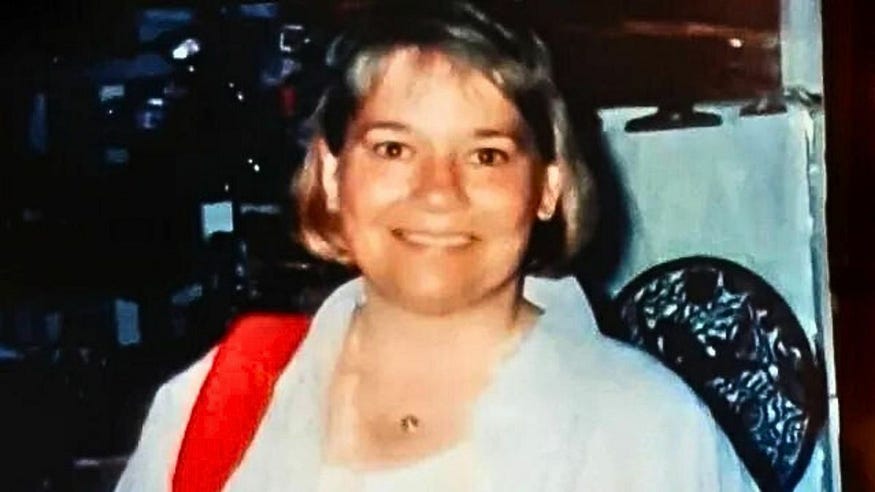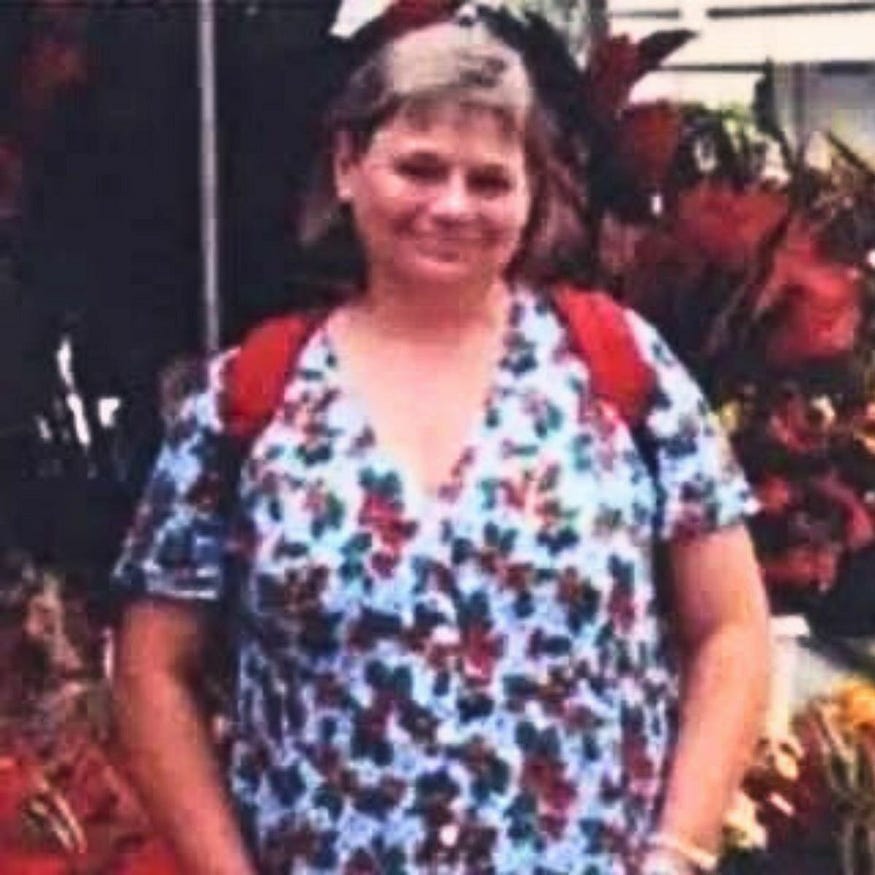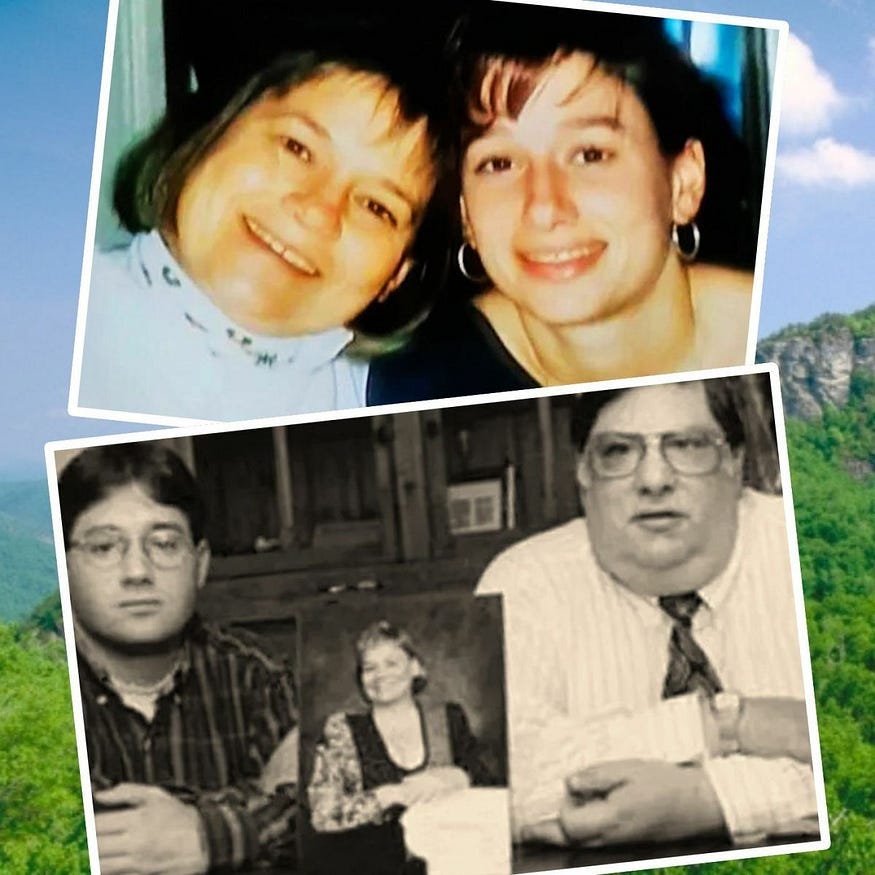Judy Smith: Missing Woman Found Murdered 600 Miles Away
Many aspects of her case continue to defy explanation
Confounding Mystery
Judy Smith, 50, was on a trip with her husband in Philadelphia. On April 10th, 1997, she let him know that she intended to go sightseeing that day, while he was at his business conference. However, she would never return.
After a series of bizarre sightings in multiple states, Judy’s body would eventually be discovered months later, 600 miles away from her last known location. The arthritic Judy was found in a wooded area, with a new backpack and wearing clothing suitable for hiking. She had been murdered.
But how did she get to North Carolina? And who murdered Judy Smith?
Judy Smith
Judith “Judy” Lois Eldredge was born on December 15, 1946, in Hyannis, Massachusetts. Described as a kind and helpful person, Judy put herself through college and eventually became a home healthcare nurse.
By 1986 Judy was twice divorced with two adult children (Craig and Amy) from her second marriage. She worked as a caregiver for a patient recovering from throat surgery.
This was how she met Jeffrey Smith, who was the son of the patient. Jeffrey was immediately struck by how kind Judy was and how much care she put into looking after his father.
Jeffrey — a lawyer who was also divorced with a grown child — soon began dating Judy. Their previous failed marriages made both of them hesitant about the idea of remarrying, so they took things slowly.
It was seven years before they would move in together and another three before they got married, in the fall of 1996.
By most accounts, the couple was very happy and they enjoyed regularly attending basketball games and going to the theater.
The Conference
Jeffrey Smith was a legal representative for the Northeast Pharmaceutical Conference, an organization of executives and researchers based out of New England. It was in this capacity that Jeffrey was asked to attend a conference in Philadelphia, which would take place from April 9–11, 1997.
Judy decided to come along on what would be the first trip the couple had ever taken together. After the conference, they intended to meet with friends in New Jersey before returning home to Massachusetts.
On April 9th, Judy and Jeffrey arrived at Boston’s Logan International Airport for their 1:30 p.m. flight to Philadelphia. She realized too late that she had left her driver’s license at home. Because of the new FAA regulations requiring passengers to provide ID before boarding, Judy wasn’t allowed to get on the plane.
She told Jeffrey to go on ahead without her, explaining that she would go home and get her driver’s license and just take a later flight. He agreed with this plan and boarded the plane.
Judy ended up taking the 7:30 p.m. flight to Philadelphia that evening and bought flowers to give to Jeffrey as an apology when she arrived. Jeffrey, for his part, said that he was just glad she was there and wasn’t bothered that she’d needed to take a later flight to get there.
Sightseeing
The next morning, the couple spoke before Jeffrey headed off to the conference. Judy said that she wanted to spend the day sightseeing around Philadelphia and visiting tourist attractions, like the Liberty Bell and Independence Hall.
Planning to attend a cocktail party together later that evening at 6 p.m., they agreed to meet back at the hotel room around 5:30 p.m.
When Jeffrey arrived at the agreed-upon time, he found that his wife was not in their hotel room. He assumed that they’d merely had a miscommunication about when and where to meet up and that she had probably already gone to the party. But when he went downstairs to check, he couldn’t find her there either.
He went back and forth between the hotel room and the party multiple times that night, hoping to run into Judy, but she never showed up.
Most of Judy’s travel belongings were still in their room. The items missing included her wallet, silver wedding band, diamond engagement ring, and the signature red backpack that she often carried instead of a purse.
Jeffrey also believed that she had roughly $200 on her.
His next course of action was to pay a cab driver to take him along the same route the Philly PHLASH tour buses used, as Judy had planned to board one that day. He hoped to see his wife somewhere along the way, but this approach yielded no results. Jeffrey was still no closer to finding out what had happened to Judy.
As the midnight hour approached with still no sign of his wife, Jeffrey finally tried to file a missing person report with the police. However, they were dismissive initially and told him that he needed to wait at least 24 hours before he could do that.
Jeffrey then appealed to Philadelphia mayor Ed Rendell and Pennsylvania House Rep. John Perzel, both of whom were in attendance at the conference, to convince the police to take action. Sympathetic to Jeffrey’s situation, they got the “wheels in motion” to start investigating Judy’s disappearance.
Jeffrey was relieved to find that the authorities were now taking his wife’s disappearance seriously and the official investigation began.
Eyewitness Accounts
The police already suspected that Jeffrey himself was involved in Judy’s disappearance and weren’t convinced she had even made it to Philadelphia. However, they soon confirmed that Judy was indeed listed on the passenger manifest for the 7:30 p.m. flight she boarded days earlier.
Also, there were others who remembered seeing her in Philadelphia before she went missing. A hotel employee told police that Judy asked him where she could take the PHLASH bus. Additionally, a bus driver claimed to have picked her up and let her off near the hotel at approximately 3 p.m.
The eyewitness accounts that came out in the days following Judy’s disappearance ranged from unremarkable to bizarre.
She was reportedly seen leaving a Greyhound bus terminal on the day she vanished, but her family believed that she most likely only stopped there to use the restroom.
Other accounts tell of a woman matching Judy’s description, who alternately appeared to be disoriented and possibly delusional. She reportedly “spoke in tongues” and made strange comments. When asked if she wanted to extend her stay at another hotel, she said that “the emperor would wire [her] money.”
A local homeless man was also convinced that the woman who had slept next to him on a bench one night was Judy.
It’s impossible to say if these sightings were actually Judy Smith, as the police later learned a homeless woman who resembled Judy was living in the area.
In fact, this woman reportedly bore such a striking resemblance to Judy, that even Craig — Judy’s son, who along with his sister Amy, had traveled to the city to look for her — mistook her for his mother when he first caught a glimpse of her across the street.
A woman came forward to say that she had seen and spoken to Judy while working as a cashier in the Deptford Mall in New Jersey, located just 22 miles away from Philadelphia.
The cashier recalled that the woman had said she was shopping for clothing for her daughter and joked that her daughter rarely liked the clothes she picked out for her — a detail that Amy later confirmed to be accurate. The woman had a red backpack with her and went on to say that her husband was at a conference in Philadelphia.
According to the cashier, when Judy was about to leave the store, she inexplicably appeared to become confused and tried to get a young girl to leave the mall with her, claiming the girl was her daughter. It’s unclear how this misunderstanding was handled, as no other details have ever been released.
With this, Judy Smith’s trail went cold.
Further Investigative Efforts and Theories
At one point in the investigation, police considered the possibility that Judy had gone through a midlife crisis and decided to leave her husband to start a new life. Jeffrey found this insulting and explained that such behavior would have been wildly out of character for Judy.
Jeffrey didn’t give up trying to find his wife. As soon as he returned home to Massachusetts, he hired a team of private investigators and distributed hundreds of missing person flyers.
Those close to him said that Judy’s disappearance took a noticeable toll on Jeffrey. He even cut back on his professional caseload as a defense lawyer, explaining: “Now that I feel that I’m a victim, I couldn’t in good conscience continue to represent criminal defendants.”
Jeffrey went on:
“The nights are the hardest, being alone, being in our house, and seeing all of her things.”
Amy, Judy’s daughter, said that as far as she was aware, her mother’s marriage had been going well. She spoke highly of Jeffrey, calling him “an honest man, who wouldn’t even cheat on his taxes.”
In fact, most of Judy’s friends and family shared the opinion that things were good between her and Jeffrey.
However, the outlier in this group was Judy’s friend Carolyn Dickey, who had this to say on the subject of the state of Judy’s marriage:
“At the time this happened, Jeff and Judy’s marriage was very tenuous. I believe that something did happen that triggered her to want to have some time away from Jeff.”
But if leaving was exclusively about wanting to get away from Jeffrey, why would she also leave her children and friends behind with no answers?
If she did leave the city of her own volition, it seems more plausible that there were deeper issues driving this decision, and perhaps even a mental health crisis of some sort.
Judy is Found
There were no further developments in the case until September 7th, 1997, when a shocking discovery was made 600 miles away in North Carolina. While hunting deer in the Pisgah National Forest, a father and son found human skeletal remains near the Stoney Fork picnic area.
Some of the bones had presumably been scattered by wild animals, while the rest were wrapped up inside a blue blanket and partially buried in a shallow grave beneath a tree.
Notable items found on or near the body included $167 in cash, a blue and black backpack, clothing (including winter clothes), a wedding ring, and a pair of sunglasses.
Cuts on both the clothes and bones indicated the unidentified decedent had been stabbed to death. A forensic medical examination determined that the victim was a Caucasian woman between the ages of 40 and 55 who had a severely arthritic knee. She had been killed several months earlier.
The murdered woman didn’t remain unidentified for long. A doctor in Franklin, North Carolina, read an article about the discovery and was immediately reminded of Judy Smith’s case, which he had learned about months earlier from one of the flyers that Jeffrey distributed. He contacted the authorities and suggested that they investigate this lead.
The body of Judy, who was known to have a severely arthritic knee herself, was positively identified using dental records. The wedding ring found with the remains was also confirmed to be hers.
At the time of her murder, Judy was wearing a different outfit — this one suitable for hiking — than the one she was last seen wearing by her husband. Also, her red backpack was nowhere to be found and her family didn’t recognize the sunglasses that had been found with the body. Despite these unexplained elements, they never doubted that this was truly Judy.
But how did Judy end up over 600 miles away from Philadelphia? Who killed her? And why? Several aspects of this case continue to defy explanation.
Though Jeffrey was evidently never officially cleared by the Philadelphia Police Department, they did come to the conclusion that he was unlikely to have committed the crime because he was suffering from health problems.
It would have been logistically difficult, if not impossible, for him to have accomplished this on his own, especially without leaving either evidence or witnesses behind.
A much likelier explanation is that Judy was murdered by someone else — either a stranger with homicidal intent with whom she had the misfortune of crossing paths or perhaps someone she knew in North Carolina that she met up with. Sadly, we may never know the answer.
Some have theorized that Gary Michael Hilton, aka “The National Forest Serial Killer,” may be responsible, as Judy’s body was discovered close to where Hilton had left a victim tied to a tree less than a year before. He has never been definitively tied to Judy’s case, however.
Asheville, North Carolina, Sightings
Other eyewitnesses in Asheville claimed to have seen Judy in the days following her disappearance. One of them was a cashier named Joanne Stucker, who had this to say about her encounter with Judy:
“She seemed very alert to me. She was very pleasant. I didn’t see anything about her that would indicate that she wasn’t right in any way. She told me her husband was an attorney and that they were from Boston. And that they had been in Pennsylvania and he was at a convention. And she had decided to come down here.”
Another interesting sighting was reported by a deli owner. According to this woman, Judy drove up to her store in a gray sedan and purchased $30 worth of sandwiches and a toy truck.
Investigators consider these to be credible sightings. If so, where did the grey sedan come from? And who was Judy buying the toy truck for?
Answers to these questions, as with many others in this case, remain elusive.
Current State of the Investigation
Sadly, Jeffrey Smith passed away in 2005, having never learned the identity of his wife’s murderer, nor how she had ended up 600 miles away.
The Judy Smith case has been covered by multiple podcasts and true crime shows, including Unsolved Mysteries.
Judy’s case remains open and unsolved.
Sources
(This article was originally published on HubPages)







